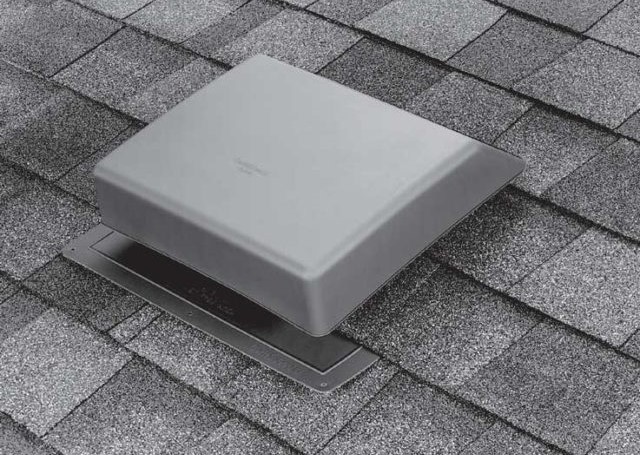You just got your new mobile home and perhaps wondering, “Are roof vents needed on mobile home?” The most straightforward answer is “Yes.” A roof is one of the most vital elements of a mobile home, and it needs to be well-ventilated to boost its efficiency.
Every inch of a mobile home has a specific design and layout starting at the chassis curved to balance and distribute its weight uniformly. To maximize the mobile home’s comfort, you need to add proper ventilation systems that offer numerous benefits.
This guide explores the benefits of installing roof vents on mobile homes. You’ll also get to learn the types of roof vents that are ideal for mobile homes.
But first, let’s look at how roof ventilation systems work.
How Roof Ventilation Works in Mobile Homes
Good roof ventilation operates by allowing fresh air to flow through the attic space and prevent it from overheating or accumulating moisture. So, how do the roof vents work?
When it’s too cold outside, the main purpose of ventilation is to help maintain a cold roof temperature in the roof. That will prevent the formation of ice dams by melting snow. The vents will also remove any moisture from the conditioned living space into the attic.
During warm seasons, like the summer, the primary purpose of ventilation in a mobile home is to expel hot or warm air from the roof or attic. This helps to prevent temperature buildup in the house, creating a cooling effect.
Note that ventilation systems work best when there is airflow within the attic. There are two methods to create airflow during attic ventilation: mechanical and natural. Mechanical methods require a power source to facilitate airflow in the vent.
The latter relies on the wind effect and stack effect, which work together to circulate the air naturally. The stack effects happen when hot air rises, creating a higher pressure at the attic’s high points. The hot air escaping from the attic is known as the exhaust.
The cool air that enters the vents is known as the intake. When high winds blow over the roof, it increases the volume of intake and exhaust, creating a wind effect. The intakes and exhaust will generate the natural flow of air, creating a well-vented attic.
Components of Roof Ventilation Systems for Mobile Homes
Roof ventilation systems are unique for every home, depending on the ceiling’s designs, code requirements, and the local climate. The three factors will influence the type of vents that are suitable for your mobile home.
That said, there are two primary components of a mobile home roof ventilation system.
- Intake Vents
- Exhaust Vents
Intake Vents
Intake vents allow cool air to enter the attic space to force the warm air to move out of the attic through a ridge vent. They work together with ridge vents for efficient cooling
These intake vents are usually located on the roof edges and can get installed at the drip edges, eaves under the soffit, or the shingles on the roof edges.
Exhaust Vents
Exhaust vents allow warm and moist air out of the mobile home. Ridge vents are the most common exhaust vents and are usually installed at the points where two roof panels meet (known as ridges).
The ridge vents consist of molded, high-impact copolymer material. You can install them underneath the final layer of roof shingles to give your roof a seamless look. Note that the ridge vents can seem invisible if you are not very keen.
Other roof vents that are visible on the roof include wind turbines, gable louvers, roof louvers, and power attic ventilators. They are permanently mounted on the roof outside. Note that ridge vents, gable louvers, and roof louvers work without using electricity.
Why Do Mobile Homes Need Roof Vents?
The primary purpose of installing roof vents on a mobile home is to expel warm and moist air from home and allow in fresh, cool air. That offers numerous benefits.
Here are the reasons you need roof vents on your mobile home.
Extends the Roof’s Lifespan
It’s no doubt that you want your mobile home’s roof to last longer than expected. The best way to achieve that is by installing the proper ventilation system.
If the attic gets overheated, the roof’s interior surface will receive heat in addition to the exterior one. This will cause the underlayment and the shingles on the rooftop to dry out and crack faster than you would expect. Repairing the damages can be costly.
When you ventilate the roof correctly, warm air will not accumulate in the attic space, preventing damages to the underlayment and roofing materials.
Reduces the Energy Costs
During summer, if there’s no proper ventilation, hot, stagnant air will accumulate under your roof, heating the ceilings and escaping into your living space. As a result, the air conditioner will work harder to cool the house, consuming more energy.
By ventilating the mobile home properly, you’ll break the cycle and remove the heating effect. Your AC will not have to work harder to cool the house, keeping your energy bills low. Not to mention, your home will feel more comfortable.
Prevents Ice Dam Formation
You don’t want to see icicles hanging on your roof’s edges during winter. That’s a sign of ice damming, an issue commonly linked to poorly ventilated attic space.
Ice damming occurs when the heat from inside the attic space combines with that from the sun to melt ice and snow on the warm roof. As the melted water runs to your roof’s edges, it begins to refreeze. When this happens repeatedly, the frozen water will accumulate, damaging the roofing system.
Ventilating the attic space will prevent heat from accumulating in the attic space, stopping ice dam formation.
Final Words
Now that you know why roof vents are needed on a mobile home, you need to install a ventilation system that matches your needs. If you don’t know how to vent a mobile home roof, consider hiring Roof Master to take you through the entire procedure. Contact us today for affordable roofing solutions for mobile homes.



